While building out the interior of the bus, we had chosen to wait on adding the cabinet doors and drawer fronts until we were closer to being finished. We knew that they would very likely become damaged while the bus was still a huge construction zone. Finally, the time had come to cover up the open closet, pantry, and cabinets. It was time to build and install the cabinet doors, drawer fronts, and all the hardware.
When designing all of the cabinetry in the bus, we planned for simple slab-fronts with ½” overlay leaving about ¼” between doors and drawers. When the day came to finally start this project, we walked around the bus making accurate measurements of the spaces in the face frames for each drawer and cabinet and then added the appropriate amounts for the overlays and spacing.
Armed with all the numbers on our cut list, we used an app appropriately named “Cut List Optimizer” to most efficiently use our sheets of ¾” birch plywood. It was awesome and saved some mental gymnastics trying to plan that out. Next, we got to work cutting and cutting and cutting. We ended up with 26 different pieces.
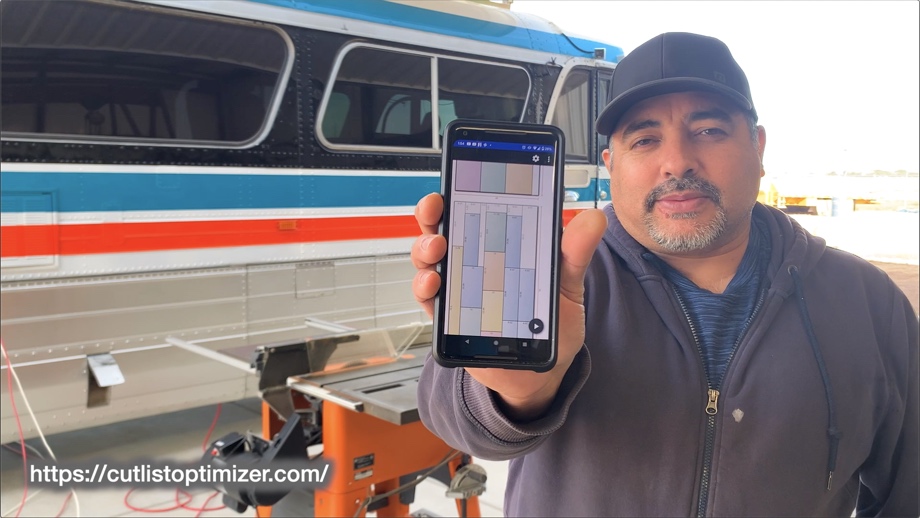
In the kids’ room, there is one real drawer and one fake drawer front that gives us access to the diesel heater. We made those two pieces out of pre-finished and edge-banded birch plywood to match the rest of the beds. Into the fake drawer front for the driver’s side bed, we made our own air intake vent (for the diesel heater) by cutting a bunch of slats into it. We then attached false-front cabinet clips that we 3D printed. This will allow us to pop off that front whenever we need to access the heater. We screwed in the real drawer front on the passenger side bed, and the easy fronts were done.
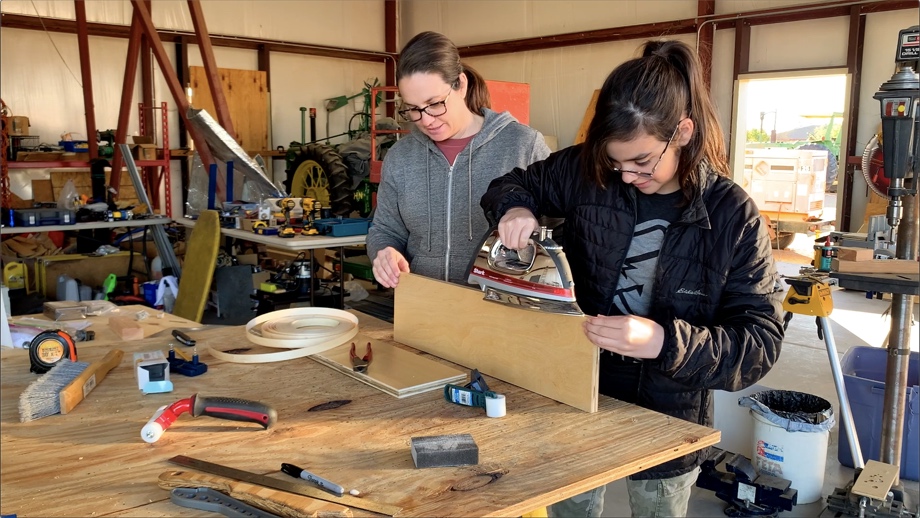
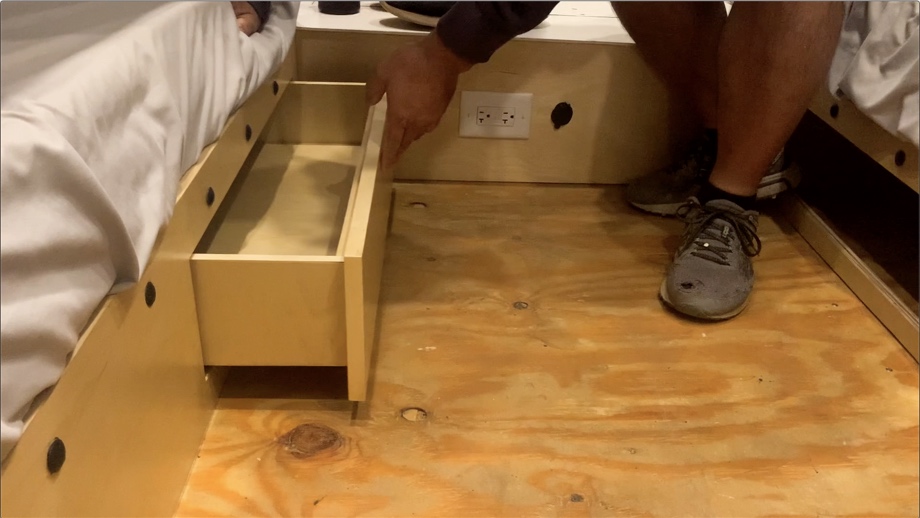
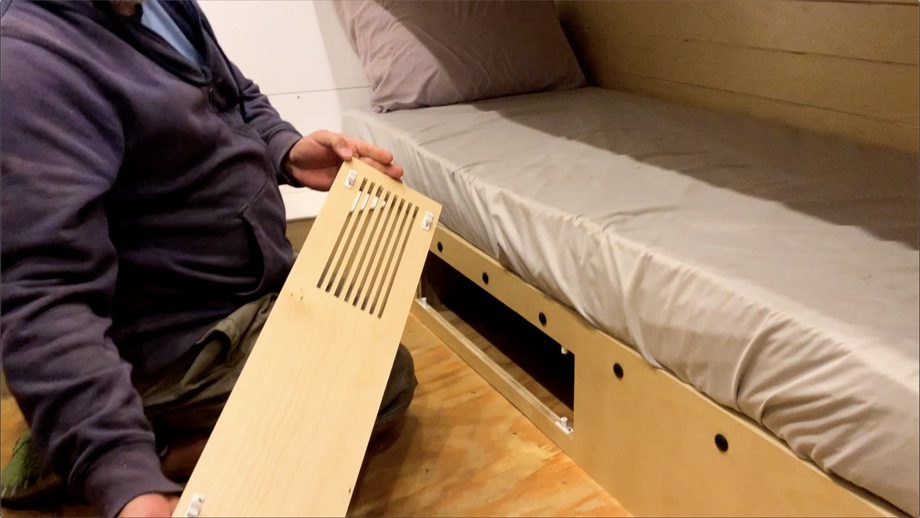
Next came planning for the hinges. For the closet, pantry, broom closet, and front cab upper cabinets, we used soft-close ½” overlay cup hinges. For the smaller cabinets, we knew that just using two hinges per door would be enough. For the larger doors, however, we were not sure if we should use three or four per door. Of course, we did some testing on some scrap wood to help us plan. In the end, we realized that three hinges would be sufficient on the larger doors.
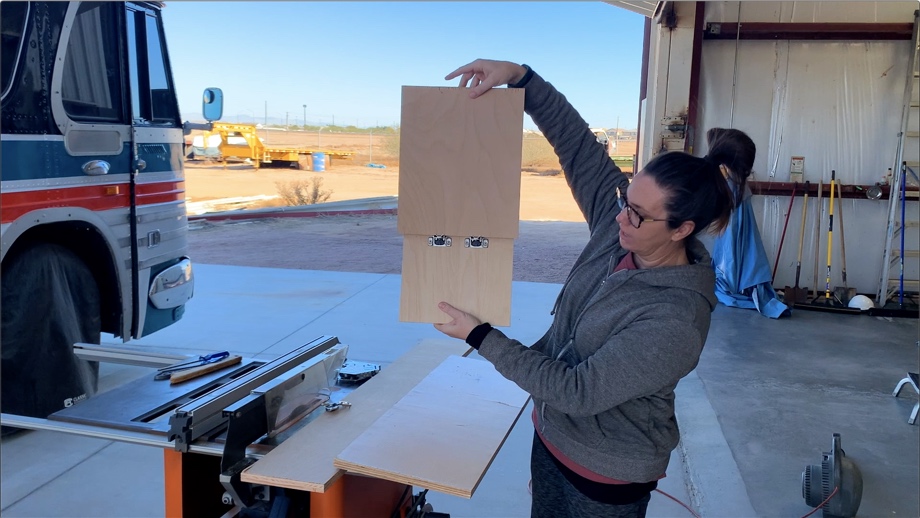
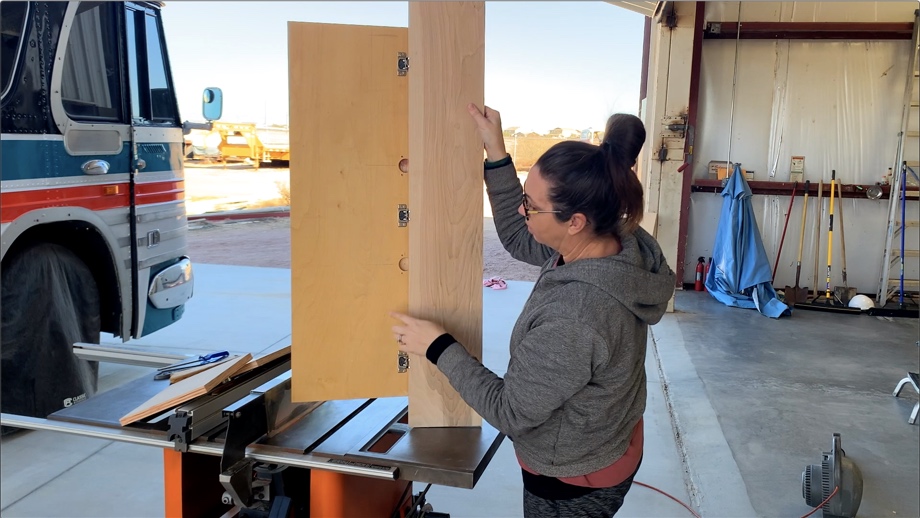
We pulled out the Kreg concealed hinge jig and got to work cutting out all of the holes for the cup hinges. This jig is on our “must-have” tool list if you are doing more than just a few hinges. We cut 32 cup hinge holes in about 30 minutes.
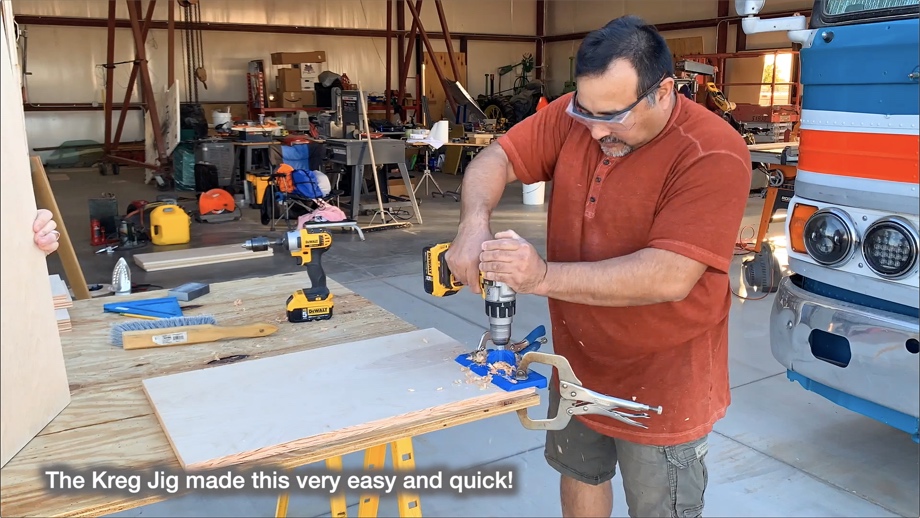
We had one more piece of prep work to do before we could paint all of these doors, and that was to make some cutouts in the technology cabinet door. Right above our refrigerator lives a cabinet dedicated to most of our electronics - router, cell booster, BMS monitor, 48-24V converter, NVD, etc. We have two pieces of equipment that we check on frequently that we wanted to mount right on the face of the cabinet so we did not have to open the door to access them: our Victron Color Control GX and our SeeLevel ii Tank Monitor. We jigsawed out the holes for those two devices.

Last, we again made air intake vent slats in the front of the cabinet. This cabinet gets pretty warm with all of the electronics inside, so we put two large 12V fans in the rear of the cabinet that suck hot air out (with more fans behind the fridge sucking all that hot air down and out the side of the bus). The slats in the front of the cabinet allow the fans to suck air from the bus through that cabinet to keep it cool.
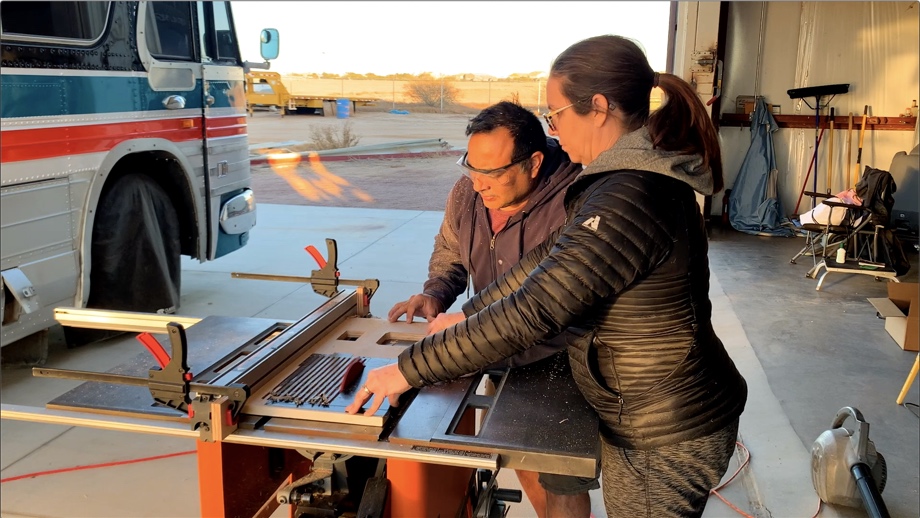
Finally, all of the prep work was done. We loaded up all of the doors and drawer fronts and took them home. Throughout the week, at night after the kids were in bed, we edge-banded all of the plywood edges. Although all that edge banding is going to be covered by paint, we have found that it paints so much nicer than the ply edges, leaving a much smoother finish. That extra step makes a big difference for us.

Once that was all done, we set up in the backyard and primed and painted all of the pieces. We have painted a lot in this bus, and we continue to be impressed by the finish that the paint sprayer gives. Painting is one of our least favorite projects. Give us a welder or an electrical project any day over painting. But, the paint sprayer has gotten us through A LOT of painting.

Finally...finally...we were ready to install. Drawer fronts were lined up and screwed in from the back. Cup hinges were screwed in and mounted on the face frames. We installed 19 out of 25 doors and drawers, and things were looking pretty good.


To be continued in Part 2.
Watch the video:
Click here If you cannot see the video.



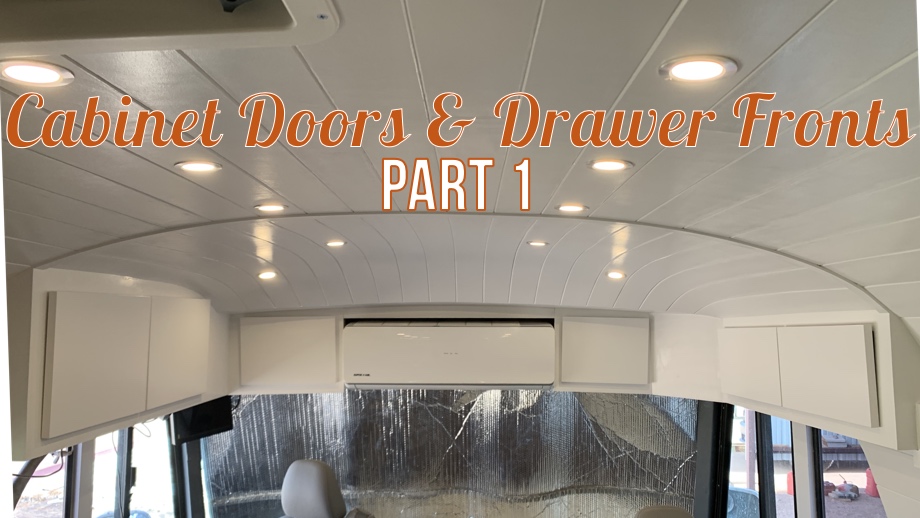









0 Comments
Comments powered by Disqus